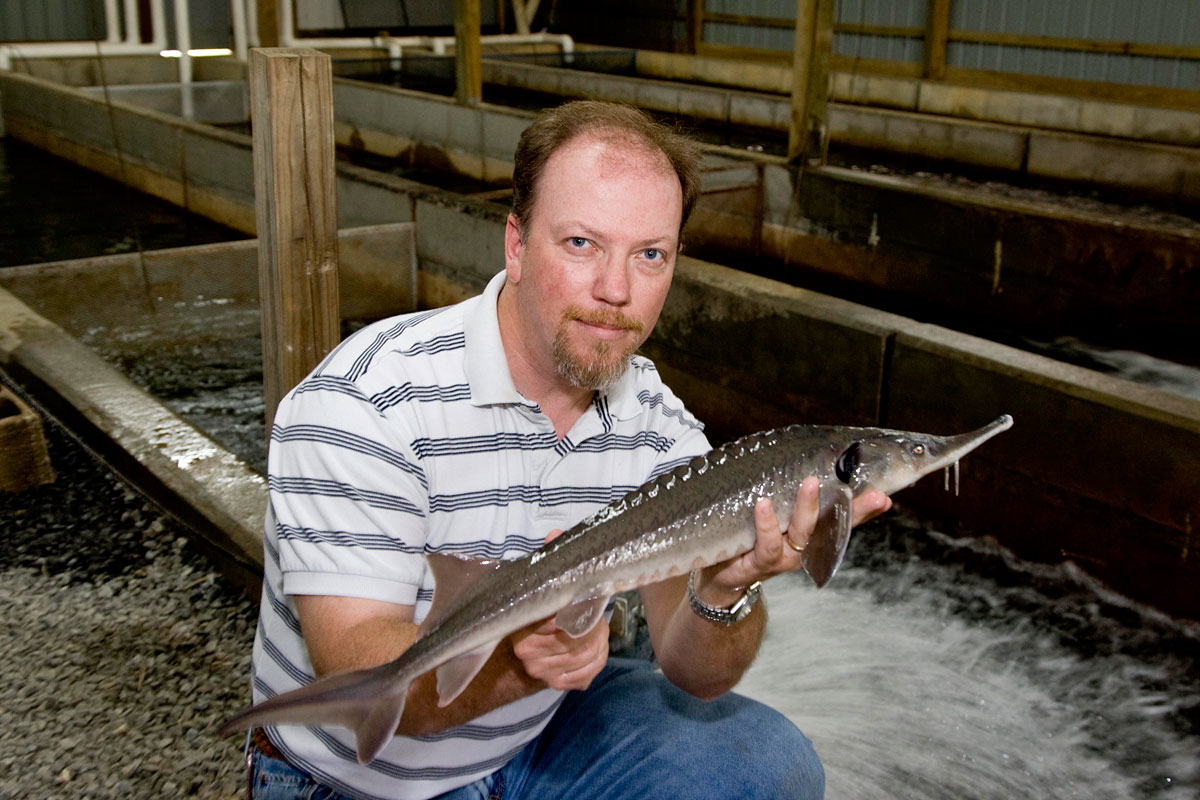Caviar is one of the world’s most prized delicacies, but overfishing has pushed wild sturgeon to the brink of extinction. A new, cost-effective and environmentally sustainable method for farming sturgeon pioneered by a UGA professor has the potential to protect wild sturgeon populations while creating a lucrative agricultural commodity.
“Historically, farmed caviar has comprised 2 percent of the world’s market while 98 percent has come from wild sturgeon,” said Doug Peterson, associate professor of fisheries and aquaculture in the Warnell School of Forestry and Natural Resources. “We’re trying to flip the market so that in 10 years it will be 98 percent farmed and 2 percent wild. That’ll be good for wild sturgeon populations and for farmers.”
Domestic white sturgeon have been successfully farmed in Northern California for decades, but attempts to farm Russian species in North America have been stifled by high start-up costs and the tendency of farmed caviar to have a muddy or “off” taste.
Peterson has created a new method of raising Siberian sturgeon that combines readily available aquaculture technology with a highly efficient filtration system and fresh spring water from the mountains of northwest Georgia. The result is environmentally sustainable caviar whose taste rivals that of wild-caught.
The UGA Premium Siberian Sturgeon Caviar is sold by Inland Seafood of Atlanta in containers that bear the UGA Athletic Association logo.
All proceeds support sturgeon conservation and aquaculture research at UGA.
This year, Peterson expects to produce about 50 kilograms of caviar with a retail value of approximately $120,000. Next year, he expects to double the inaugural yield for a total of approximately 100 kilograms.
His long-term goal, however, is to lay the foundation for a viable Siberian sturgeon farming industry in North America.
“My whole career has been focused on understanding the biology of these ancient animals,” Peterson said. “In just a flicker of geological time, we’ve nearly exterminated them. And one of the most important things we can do to help bring sturgeon back from the brink is to change the foundation of the caviar industry so that it relies on high-quality, sustainably farmed fish.
The UGA caviar project has shown that there is no reason why we can’t save the sturgeon while spurring new economic opportunities in Georgia’s agricultural economy.”


